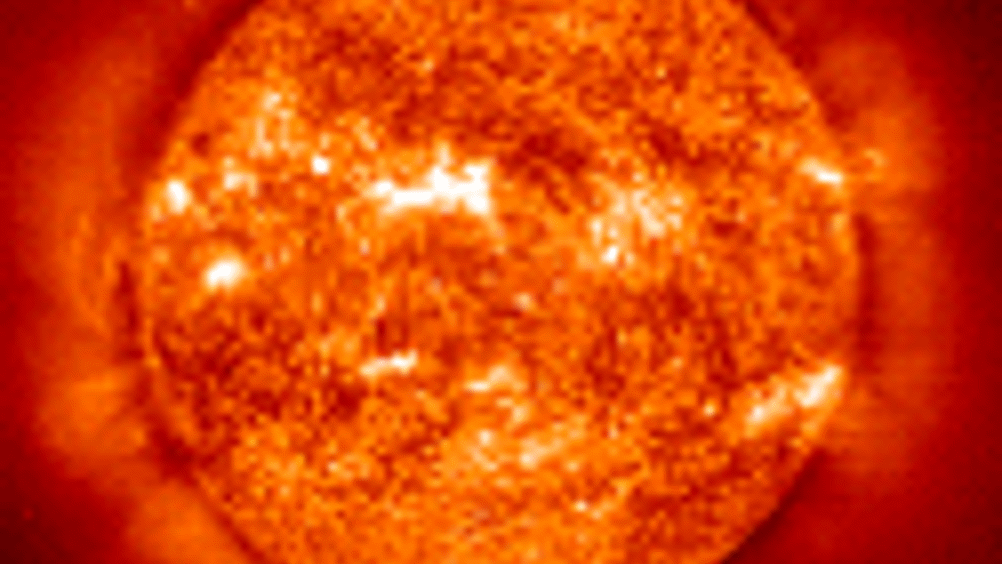Seeing through the sun
NASA researchers using the Solar and Heliospheric Observatory spacecraft have developed a method of seeing through the sun to its far side.

researchers using the Solar and Heliospheric Observatory (SOHO) spacecraft have developed a method of seeing through the sun to its far side.
"This new method allows more reliable advance warning of magnetic storms brewing on the far side that could rotate with the sun and threaten the Earth," said NASA-supported scientist Phil Scherrer of Stanford University, USA.
Magnetic storms resulting from violent solar activity disrupt satellites, radio communications, power grids and other technological systems on Earth. Advance warning can help planners prepare for operational disruptions. The sun rotates once every 27 days, as seen from Earth, and this means the evolution of active regions on the far side of the sun previously has not been detectable. Knowing whether there are large active regions on the opposite side of the sun may greatly improve forecast of potential magnetic storms.
The new observation method uses SOHO's Michelson Doppler Imager (MDI) instrument to trace sound waves reverberating through the sun to build a picture of the far side.
Register now to continue reading
Thanks for visiting The Engineer. You’ve now reached your monthly limit of news stories. Register for free to unlock unlimited access to all of our news coverage, as well as premium content including opinion, in-depth features and special reports.
Benefits of registering
-
In-depth insights and coverage of key emerging trends
-
Unrestricted access to special reports throughout the year
-
Daily technology news delivered straight to your inbox










Water Sector Talent Exodus Could Cripple The Sector
Well let´s do a little experiment. My last (10.4.25) half-yearly water/waste water bill from Severn Trent was £98.29. How much does not-for-profit Dŵr...